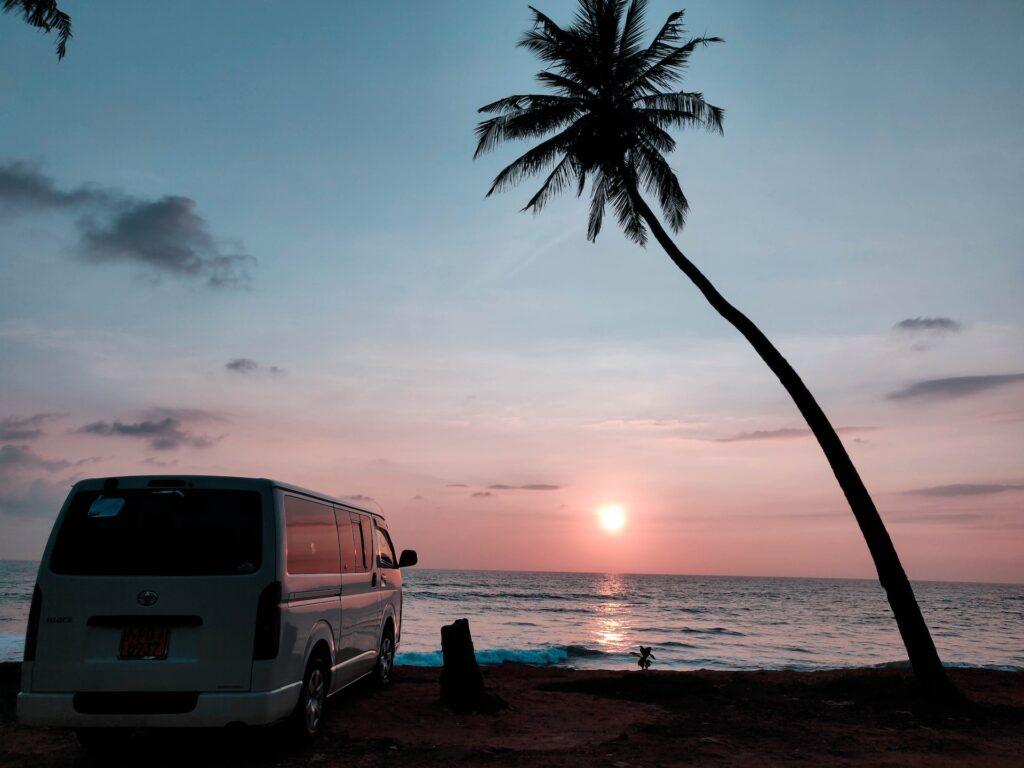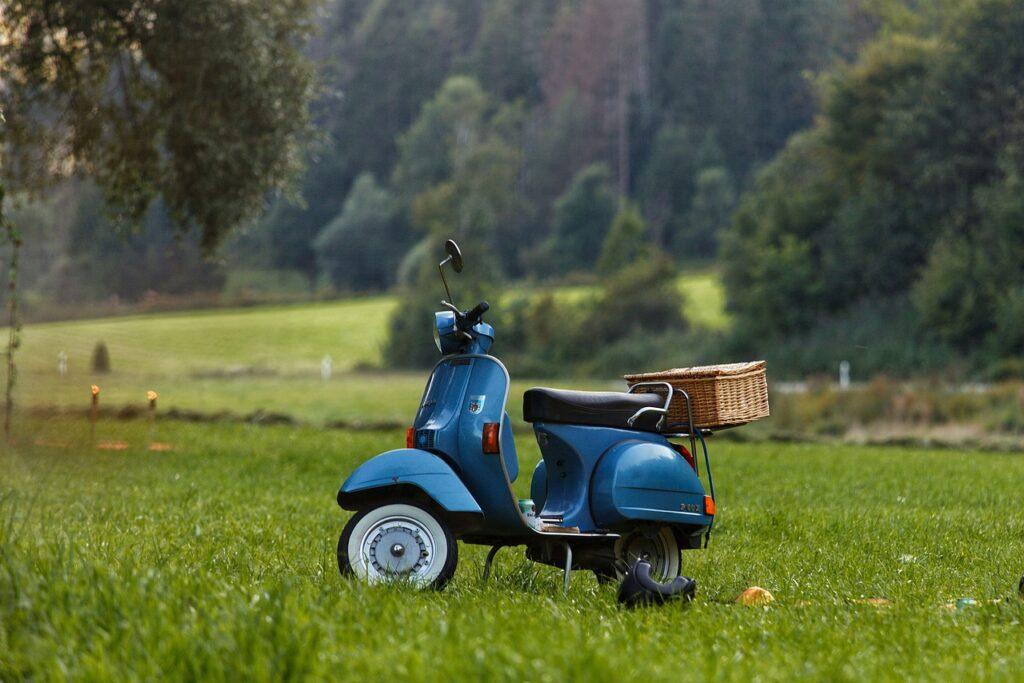Arriving in a foreign country can be challenging for travelers, especially when it comes to arranging transportation and accommodation. However, in Sri Lanka, the island paradise in the Indian Ocean, there are numerous ways to arrive and move around the place comfortably and safely. This content is designed to help tourists get all the information they need about travel and transportation in Sri Lanka. We provide an overview of air connections, public transportation, rental cars and drivers, as well as tuk-tuks and trains. You will learn more about traffic rules and safety instructions, tips for trips by tuk-tuk or motorcycle and recommendations for accommodation and food. Finally, we present some of the best sights and activities that you should not miss during your stay in Sri Lanka.
Table of Contents
1. Arrival to Sri Lanka
Most tourists arrive by air. There are several airports in the country, of which Bandaranaike International Airport near Colombo is the largest and busiest. From here, there are numerous flight connections to different parts of the world, including Asia, Europe, Australia and the Middle East. There are also domestic flights to smaller airports in Sri Lanka.
Tourists need a valid visa to enter Sri Lanka. This can be applied for online and is usually available within 24 hours. The visa can be applied for either as a pure tourist visa or as a business visa. Tourists should make sure to apply for the correct visa, otherwise there may be problems with the entry.
In addition to air travel, there is also the option of traveling to Sri Lanka by ship or ferry. The port of Colombo is the largest port in the country and is regularly visited by cargo and passenger ships from different parts of the world. However, most of these ships are cargo ships, so the number of passenger ferries is limited.
For tourists arriving from India, there is a special option: the “ferry service” between Rameswaram in Tamil Nadu and Talaimannar in northern Sri Lanka. This service is operated by the Sri Lanka Shipping Corporation and offers tourists a unique opportunity to connect the two countries by sea. The crossing takes about 3 hours and is available to both tourists and locals.
So, overall, there are several ways to travel to Sri Lanka, depending on your location and preferences. Regardless of the option chosen, it is important to be aware of the entry requirements in advance and apply for the necessary visas and travel documents to ensure a smooth arrival in Sri Lanka.
2. Transportation in Sri Lanka
Sri Lanka has a variety of transportation options that make it easy for tourists to explore the country. From buses and trains to tuk-tuks and rental cars, there is something for every traveler.
2.1 Bus

Buses are the most common and cheapest means of transportation in Sri Lanka. There are numerous bus routes throughout the country, connecting different cities and attractions. The buses are usually air-conditioned and have comfortable seats, so the ride is pleasant and comfortable. There are also private bus companies, which are a bit more expensive, but offer better service. However, the buses are often crowded and the schedules are not always reliable.
2.2 Rail

Another way to explore the country is by traveling by train. The train lines in Sri Lanka are known for their picturesque beauty and offer the traveler breathtaking views of the landscape. There are several train services from Colombo to different parts of the country. The trains are usually on time and offer a cheap alternative to the bus. Sri Lanka’s rail network is well developed and offers a convenient and inexpensive way to travel around the country. The rail lines pass through many of the country’s major cities and offer breathtaking scenery during the journey.
Train tickets can be purchased online through the official Sri Lanka Railways website or at local travel agencies.
2.3 Tuk-Tuk

Tuk-tuks are a fun and easy way to get around Sri Lanka. They are three-wheeled motorcycles with a roof and room for 2-3 people. For short distances within towns and villages, tuk-tuks are very popular. These three-wheeled vehicles can be found throughout Sri Lanka and offer a fast and convenient way to get around. However, tourists should be careful to negotiate the price in advance, as tuk-tuk drivers sometimes try to overcharge. There are no fixed fares.
2.4 Private cabs

One of the most popular means of transportation for tourists in Sri Lanka is the private cab. These can be booked online or locally and offer a convenient and quick way to get around town or between cities.
Prices vary depending on the distance and type of vehicle, but it is advisable to negotiate the price in advance to get a fair deal.
2.5 Car or scooter rental

Finally, there is the option of renting a car or a scooter to explore the country on your own. This offers the greatest flexibility, but also requires a certain amount of driving experience and knowledge of the traffic rules in Sri Lanka. It is also important that the rented vehicle is in good condition and adequately insured.
However, it is important to note that traffic in Sri Lanka can be very chaotic and driving can be difficult for foreigners.
3. Road traffic and traffic rules in Sri Lanka
Anyone traveling in Sri Lanka should be aware of the local traffic rules. There is left-hand traffic, which can be unusual for many travelers from countries with right-hand traffic. The condition of the roads can also vary greatly from place to place, especially on country roads it can be bumpy and uneven. Here, anticipatory and defensive driving is important.
Traffic rules in Sri Lanka are similar to those in other South Asian countries and can be somewhat confusing for foreigners. It is therefore advisable to inform yourself about the local rules and customs before starting a car or motorcycle trip.
Some important rules are:
- On most roads, the speed limit is 56 km/h. However, in certain areas, such as near schools or hospitals, a speed limit of 40 km/h applies.
- A valid driver’s license and vehicle documents must be carried at all times.
- Seat belts must be worn on all seats.
- The use of cell phones while driving is prohibited.
- Drinking and driving is strictly prohibited and is punishable by heavy fines and, in the worst case, imprisonment.
- Helmets are compulsory for motorcyclists.
4. Conclusion
In summary, there are a variety of transportation options for tourists in Sri Lanka, from cabs and tuk-tuks to rental cars and bicycles. It is important to know the different options and choose the one that best suits your needs and budget.
Sri Lanka often has a high volume of traffic, especially in the cities. Special care should be taken when overtaking as the roads are often very narrow. Many roads also have busy bicycle, motorcycle and tuk-tuk traffic, which often snakes through the narrow lanes and streets.
With a few basic safety precautions and careful planning, you can travel safely and comfortably through the country and enjoy all the beauty Sri Lanka has to offer.
